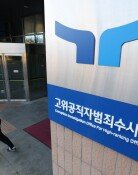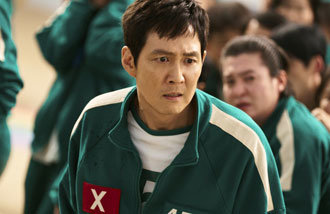Lawmakers drove initiative for TSMC plant construction in Japan
Lawmakers drove initiative for TSMC plant construction in Japan
Posted March. 02, 2024 07:46,
Updated March. 02, 2024 07:46
On February 24, 2024, Morris Chang, the Founder of Taiwanese chipmaker TSMC, presided over the opening ceremony of the company's new plant in Japan's Kumamoto Prefecture. Joining him were two lawmakers from Japan's ruling party, Akira Amari and Koichi Hagiuda, marking the occasion with celebration.
To be fair, it's customary for lawmakers in Korea to attend major plant openings or groundbreaking ceremonies. Typically, representatives from the districts where these plants are located participate in these events, often posing for photographs. For instance, both ruling and opposition party members representing districts attended the opening ceremonies of Samsung's Pyeongtaek and Hwaseong Campuses in 2015 and 2018, respectively.
Unfortunately, there haven't been any instances where Korean lawmakers attending such events have actively pursued significant policies to support the semiconductor industry. For instance, the lawmaker from the then-opposition party who attended Samsung's Hwaseong Campus event reportedly sought support for small-to-medium enterprises (SMEs) from Samsung Electronics after later becoming the Minister of SMEs and Startups. Similarly, the lawmaker from the ruling party who participated in the Pyeongtaek Campus ceremony now leads the National Assembly special committee on strategic high-tech industries. However, within the first 10 months since its inception, the committee only convened four meetings, two of which focused on appointing the committee chair and the assistant administrator, respectively.
Regarding the Japanese lawmakers mentioned earlier, Hagiuda represents Tokyo and Amari represents Kanagawa, both over 1,200 kilometers away from Kumamoto Prefecture where the TSMC plant is located. Similar to Korea, Japanese politics demand grassroots engagement in districts rather than focusing solely on mainstream activities to gain political significance. They could face criticism from constituents for not hosting the construction project in their own districts. Yet, they participated in celebrating an event held in another prefecture, raising the question of their motivation.
On Wednesday, Japan's Asahi Shimbun published an article revealing an intriguing story regarding the hosting of the TSMC plant. The article delves into the April 2021 summit meeting between U.S. President Joe Biden and Japanese Prime Minister Yoshihide Suga, where a joint statement was issued, emphasizing the significance of peace and stability in the Taiwan Strait for the first time in 52 years. This statement was widely interpreted as a reinforcement of the U.S.-Japan alliance aimed at containing China.
However, Japan aimed to broaden the alliance beyond the military sphere to include the semiconductor industry, which faces increasing competition from China. The ruling party swiftly responded. Akira, recognized as an expert in industrial policies within the party, established a federation of lawmakers advocating for the semiconductor industry as a core strategic priority for the nation, rather than merely providing generic industry support. He even enlisted former Prime Minister Shinzo Abe among the founding members. Meanwhile, Hagiuda, then Japan's Minister of Economy, Trade, and Industry, acknowledged shortcomings in industrial policy formulation and apologized to the National Diet. He urged his ministry to develop semiconductor-specific strategies, pushing officials to surpass conventional approaches and deliver initiatives that were “far superior to some high-school assignments."
Just two months after the U.S.-Japan summit, the Japanese government swiftly devised its semiconductor digital industry strategy and facilitated the TSMC plant construction project. This demonstrates a departure from Japan's traditional reputation for sluggishness. Since the groundbreaking, construction has progressed nonstop, culminating in last week's opening ceremony. These lawmakers weren't mere bystanders or participants in a good photoshoot and fancy promotional material; they symbolized Japan's determination to reclaim a prominent position in the global semiconductor supply chain. They signaled Japan's proactive stance by seizing opportunities in the evolving industrial landscape and proactively hosting key projects.
Unfortunately, Korea faces a bleak situation. Instead of substantive policies, shallow strategies for election campaigns are prevalent, such as branding the southern part of Gyeonggi Province as the "Semiconductor Belt." National-level policies to effectively compete in the semiconductor industry are absent from both parties' proposals for the general election. Hastily nominating a former tech giant executive for an election district to court voters in their 20s and 30s employed at semiconductor sites does little to establish a serious survival strategy in the restructuring of the global supply chain.







